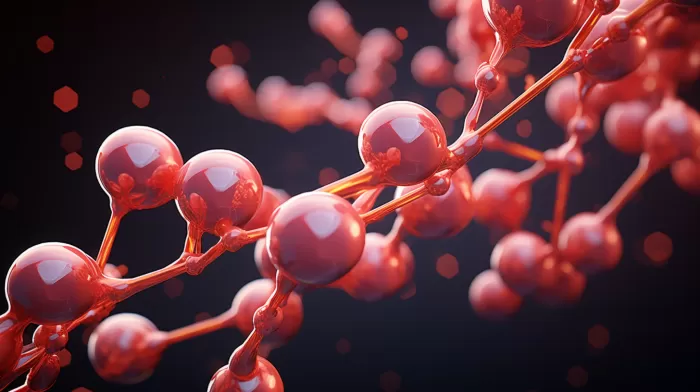Hormone replacement therapy can be beneficial, and it’s essential to know the difference between synthetic chemicals (progestins like Provera®) and bio-identical progesterone for women’s health. Women and practicing physicians must understand that bio-identical progesterone boosts wellness, while progestins can be risky.
Progesterone’s Health Benefits
Progesterone is a vital hormone made in the female body that provides numerous health benefits. For example, progesterone supports and restrains the growth of tissue inside the uterus, which estrogen promotes, and restricts estrogen synthesis. Additionally, progesterone suppresses the enzymes that promote estrogen production, blocks estrogen receptors, and suppresses the genes that are encoded to promote estrogen production1.
Furthermore, progesterone has protective effects on breast tissue and reduces estrogen’s ability to stimulate breast cancer growth2. In contrast, synthetic progestins do not lower the risk of breast cancer, and long-term use can promote breast cancer.
Remember that synthetic progestins and bio-identical progesterone are not the same. The Women’s Health Initiative reported in 2002 that synthetic oral estrogen plus progestin therapy users had increased rates of heart disease and breast cancer3. By contrast, bio-identical estrogen, when applied transdermally (on the skin), does not have the same risks due to a difference in the way it is metabolized by the liver.
Fear of Progesterone
Due to a lack of understanding, many people believe that synthetic progestins are equivalent to progesterone and misinterpret studies to think progesterone is harmful and can promote breast cancer. However, several clinical studies show that progesterone lowers breast cancer risk while synthetic progestins (used in the studies) have the opposite effect45.
Moreover, there’s a significant difference between progestins and bio-identical progesterone in terms of their influence on cardiovascular health. Progestins can cause potentially harmful vasoconstriction, while progesterone stimulates vascular relaxation6. Also, lipid profiles worsen with progestins but improve with progesterone.
Mistaken Beliefs and Hormone Problems
There are distinct differences between synthetic progestins and real progesterone, both in their chemical structures and effects on the body. For instance, the human body has enzymes to properly metabolize progesterone, but we do not know if there are enzymes to convert progestins to safe or unsafe substances over time7.
Many doctors still give synthetic progestins to younger women for reasons unrelated to birth control without acknowledging the potential link between the oral contraceptive “pill” and an increased risk of breast cancer later in life8.
Conclusion
Understanding the distinct differences between synthetic progestins and bio-identical progesterone is crucial for making informed decisions about hormone replacement therapy. Progesterone offers numerous health benefits and poses fewer risks than synthetic progestins, making it a safer and more beneficial choice for women.
- Speroff L, Glass R, Kase N. Clinical Gynecologic Endocrinology and Infertility. 7th Edition, Lippencott Williams and Wilkins, Baltimore, MD, 2005. p.130. ↩
- Speroff L, Glass R, Kase N. Clinical Gynecologic Endocrinology and Infertility. 7th Edition, Lippencott Williams and Wilkins, Baltimore, MD, 2005. p.599. ↩
- “Risks and Benefits of Estrogen Plus Progestin in Healthy Postmenopausal Women” JAMA. 2002;288(3):321-333. ↩
- Chlebowski RT, et al. “Breast Cancer after Use of Estrogen plus Progestin in Postmenopausal Women.” N Engl J Med 2009; 360:573-587. ↩
- Chlebowski, RT, et al. “Estrogen Plus Progestin and Breast Cancer Incidence and Mortality in Postmenopausal Women.” JAMA. 2010;304(15):1684-1692. ↩
- Lyytinen H, Pukkala E. et al. “Breast cancer risk in postmenopausal women using estradiol-progestogen therapy.” Obstetrics and Gynecology 2009;113(1):65-73. ↩
- Speroff L, Glass R, Kase N. Clinical Gynecologic Endocrinology and Infertility. 7th Edition, Lippencott Williams and Wilkins, Baltimore, MD, 2005. p.896. ↩
- Colditz GA, Hankinson SE, Hunter DJ, et al. “The use of estrogens and progestins and the risk of breast cancer in postmenopausal women.” N Engl J Med 1995;332(24):1589-1593. ↩



